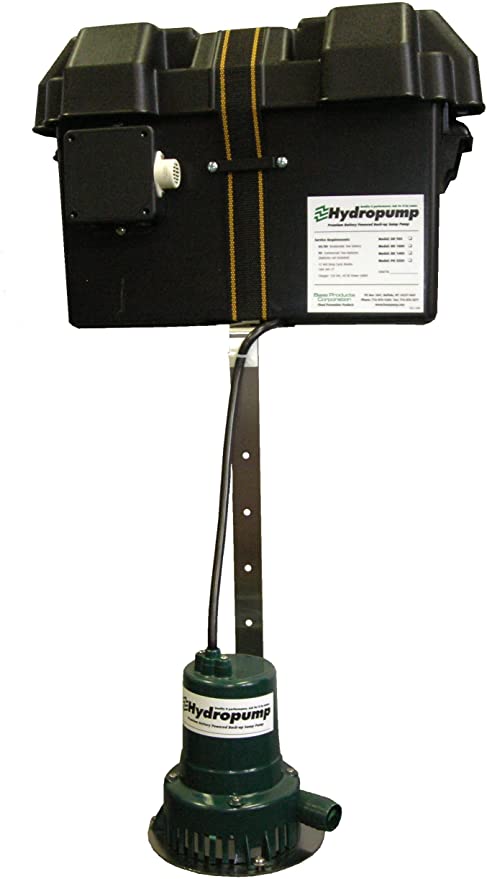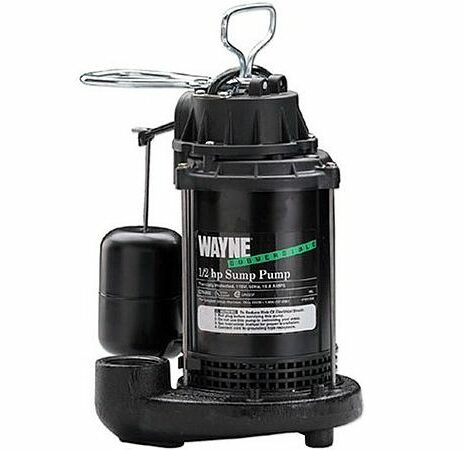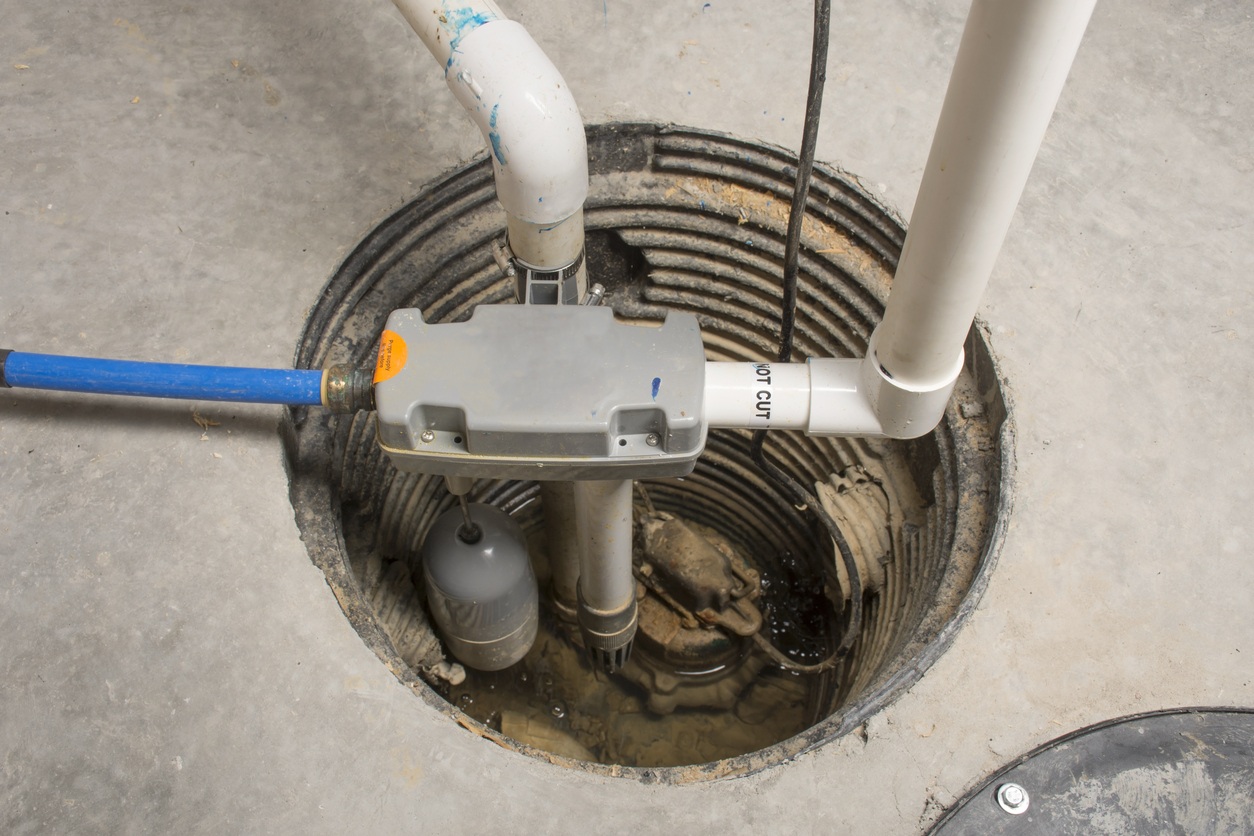Operating a sump pump is critical for many homeowners, especially when it needs to run too long. Usually, a sump pump is located in the basement. Nevertheless, you should know how vulnerable your basement can be in different weather conditions.
Whether it is the rainy season with strong thunderstorms, a snowy winter, or even regular leaks, your basement must stay dry at all times.
Therefore, your basement is supposed to have a sump pump. This pump aims to protect your home’s underground from flooding and water damage.
It is a significant component of the water system. As a result, many folks get confused when it comes to knowing how often a sump pump should run.
The truth is that there’s no one-size-fits-all solution. The frequency of sump pump cycles depends on the situation, such as the condition of the water level and the surrounding area.
Before we get to the running time of the sump pump, it’s essential to understand how it works.
The Working Principle of Sump Pumps
 Although you will find several types of sump pumps on the market, they follow the same working procedure. The underground pump has only one job, which is to clear out surplus water from your basement.
Although you will find several types of sump pumps on the market, they follow the same working procedure. The underground pump has only one job, which is to clear out surplus water from your basement.
The idea is that when water starts to fill the basement, it flows towards the slope of the floor. Here, water is collected in a sump, which is a big hole in the ground. This is where the role of the sump pump becomes significant.
The pump is located within the hole. When the water level rises over a certain point, the sump pump triggers a switch and turns on.
Once the pump starts, it clears the water via a pipe and directs it outside your house or to a nearby drain. A one-way check valve in the line prevents water from flowing back to the sump.
This pumping process might need to occur several times a day, depending on the condition of the water. As a result, you may wonder about the ideal cycle length.
How Often Should My Sump Pump Be Turned On?
The sump pump operates on its own. Hence, you may not be aware of when it is switched on. So, how many times a day does a sump pump run?
There is no hard and fast rule regarding it. The simple answer is that the sump pump should be activated when it is required.
Let’s assume that your sump pump is in good operating condition. In that case, it should only run when the water level reaches a certain point that triggers the switch. Depending on your residential area, the pump may run anywhere from twice to six times a day.
In regions with low water levels, the sump pump may only need to work twice or thrice a day. However, it is also possible that it runs more than four times a day.
This may happen due to the raised water levels and the weather conditions. So, let’s get to know the sump pump’s running frequency in various situations.
How Do Weather Conditions Affect the Sump Pump Cycles?
-
Sump Pump Cycles in the Winter
Although sump pumps are triggered when water reaches a certain level, things are different in the winter. This is because, since the water is mainly frozen, most sump pumps aren’t used frequently. The pump will only turn on when the ice has melted and cleared the line.
When the water is frozen, the pump may only need to run once a day, but it may run every 2-5 minutes after it starts melting. It’s also conceivable that if the water isn’t frozen, the sump pump will run regularly.
-
Sump Pump Cycles in the Spring
The spring thaw might send enough water into your sump after a long winter. It’s possible that the melting snow will not be absorbed by the earth and may end up in your basement instead.
As a result, even in the spring, many pumps continue to run frequently.
-
Sump Pump Cycles in the Rain
 During the rainy season, the frequency of sump pump cycles is dependent on the intensity and duration of the rain. In most situations, a pump will operate continuously for 2-3 days following heavy rain. This is because the earth may not be able to absorb the heavy rains immediately.
During the rainy season, the frequency of sump pump cycles is dependent on the intensity and duration of the rain. In most situations, a pump will operate continuously for 2-3 days following heavy rain. This is because the earth may not be able to absorb the heavy rains immediately.
Water can also seep through the floor and walls if negative or flat grades surround your basement. As a result, it’s pretty normal for the sump pump to run for an extended period when there’s a lot of rain.
However, your pump may also operate continuously regardless of the weather. This can be for a variety of reasons.
What’s the Deal With My Sump Pump Running so Often?
If your sump pump is running more frequently than usual, even where there are no unusual weather conditions, the reason might be one of the following:
-
Groundwater Level
The groundwater from the lowest level is collected by the drain tiles that surround your home and seeps into the basement. As a result, the machine must continually pump this water.
Furthermore, if you live near a body of water, you may need to waterproof your basement to prevent excess water from entering.
-
Broken Underground Water Main
A water pipeline near your property may have burst. As a result, the sump may remain full of water.
You can test this by turning off the water supply and watching to see if the machine reduces its pumping. You can also test the sump water for the presence of chlorine.
-
Underground Water Flow
Another reason for your sump pump to run might be an underground spring or some other water flow. Furthermore, if you live near a lake or pond, your home is most likely below the water level, causing seepage.
As a result, the pump needs to run continuously. Because of these factors, your sump pump may continue to work even if there is no rain.
6 Common Reason for Sump Pump Constantly Cycling
If you don’t have any of the issues mentioned above but notice your sump pump operating for more than two to three days, you should look into alternative possibilities. There’s a good chance that the system isn’t working correctly or is faulty. As a result, you should investigate the cause as soon as possible.
Here are a few typical causes you can look into:
-
Small Sized Pump
You may have installed a low-powered pump due to the size of your property and the state of the surrounding water. It may not be enough to pump the water completely, so it runs continuously.
One-third of a horsepower, which can pump 25 gallons per minute, is appropriate for average-sized houses. However, some individuals opt for the less expensive option and purchase a smaller pump.
Not only would that take longer to pump, but a smaller motor will also cost you more money. As a result, upgrading to a bigger pump will address the problem of continuous operation.
-
Mechanical Issues
Mechanical problems might cause a pump to underperform at times. It may occur as a result of the pump’s age. Another cause of poor performance could be the use of a substandard extension cable.
You may use an online calculator to estimate the extension cord’s required power. However, if you are unsure about the cable, you can also ask a skilled plumber to inspect the system.
-
Issues With the Check Valve
A one-way water valve, known as a check valve, prevents water from flowing back via the drained line.
However, this valve may get worn and ineffective after a lengthy period of usage. As a result, water may readily return to the sump, which is why the pump must run continuously.
You can check the line after removing the valve to see what’s wrong. Since it is a low-cost component, you can quickly replace it.
-
Clogged up Switch or Pump

If your sump pit doesn’t have a lid, dirt and debris will most likely gather in it, clogging the pump. Furthermore, if the pump is positioned at the bottom of the sump, it may get blocked when pushing unclean water.
As a result, the sump pump may occasionally switch on and off. It’s also possible that it’ll keep the pump going continuously.
To solve this problem, make sure the sump pit is completely covered so that no dirt or debris may get into it. In addition, it can keep pets from falling in—nonetheless, a lid is not a costly component.
-
Clogged Discharge Line
The water can flow back if the discharge line distal to the valve is stopped at the end or elsewhere along the way. As a result, the sump pump will operate continuously without draining any water.
If you can identify the issue, you’ll be able to resolve it on your own. To find out whether there are any obstructions in the discharge line, you may need to disconnect it from the pump.
-
Pit Size
Another issue that might cause the pump to operate continuously is the size of the pit. To get the pump to function correctly, you’ll need the right hole.
For example, if the groundwater table remains below your basement floor, the pump pit can quickly fill up. Raising the pit’s depth might help it rise above the ground.
Why Is My Sump Pump Not Working?
There could be numerous reasons why your sump pump does not turn on at all. Some issues are simple enough, while others are more complicated.
Here are some of the most prevalent causes.
-
No Electricity Connection
Since the sump pump is powered by electricity, you should double-check the connection. The power connection may thus be identified by examining the cord as well as the circuit breaker.
-
Overheated Pump
If you operate your pump for an extended period, it may overheat. As a result, it requires some time to cool down before returning to work.
-
Jammed Impeller
The impeller is a fan-shaped component that sits above the pump’s water intake hole. It aids the flow of water through the sump.
The pump will not run if the impeller becomes stuck. You can remove the bottom section of the pump and disconnect it to check it out. You can also clean it out to make sure the fan isn’t clogged.
-
Bad Float Switch
If everything else appears fine, the float switch is the last item to examine. It might get stuck or malfunction due to dirt.
As a result, you’ll need to replace a faulty switch with a new one if it’s broken.
Frequently Asked Questions (FAQs)
1. Can a Sump Pump Run Continuously for 24 Hours?
A sump pump can run for 24 hours, although this might cause problems. If the pump is operated for that long, it may burn out.
However, the duration of the operation is determined by the pump’s quality and the amount of water in the sump pit.
In general, a high-quality pump can run continuously for 20-24 hours without causing any problems. On the other hand, a low-quality pump can not function consistently for more than 6-18 hours.
2. Is It Normal If a Sump Pump Runs Every 30 Seconds?
A sump pump should typically run whenever required, although it may occasionally run out of nowhere. Sump pumps, for example, may operate every 20 minutes or every 30 seconds.
The pump running every 30 seconds is unusual and could signal a problem with your basement foundation. It might be caused by a burst underground water main. As a result, you should investigate and try to find out the root cause.
Final Thoughts
Any type of sump pump may function well with regular maintenance. As a result, the sump pump should be turned on as soon as possible.
However, if you notice any abnormal activity, you may inspect the pump to determine the source of the problem using the procedures described in this article.
